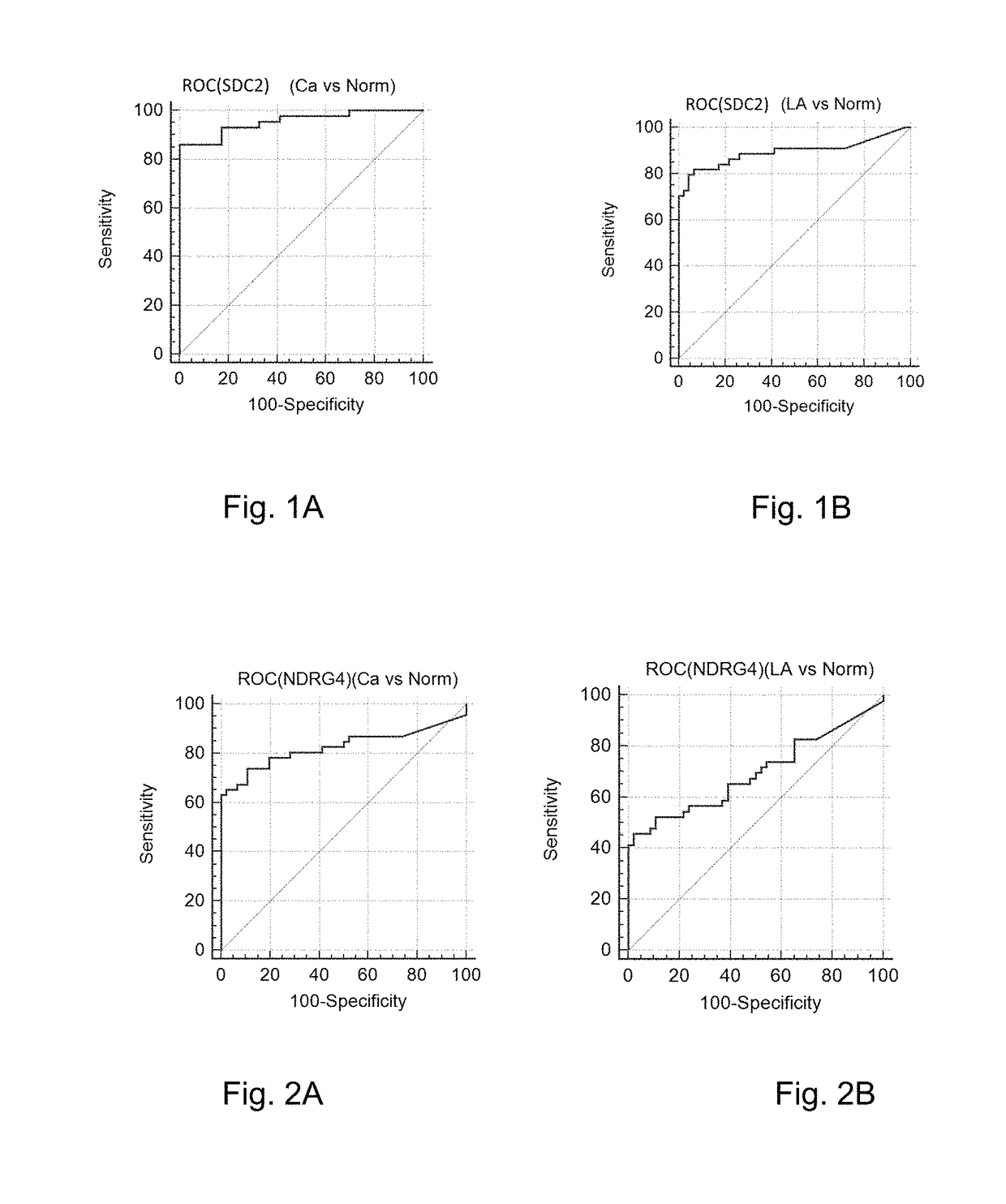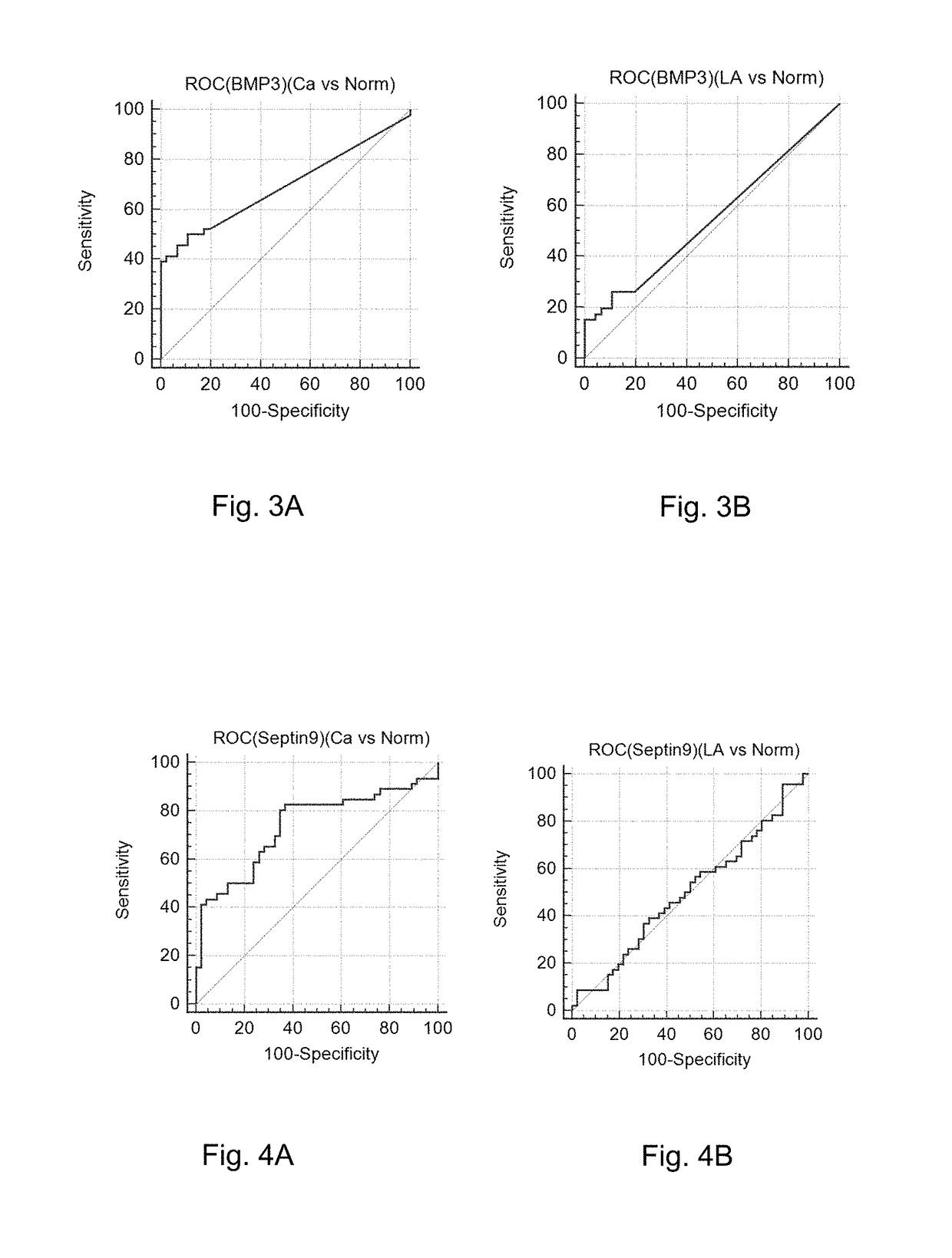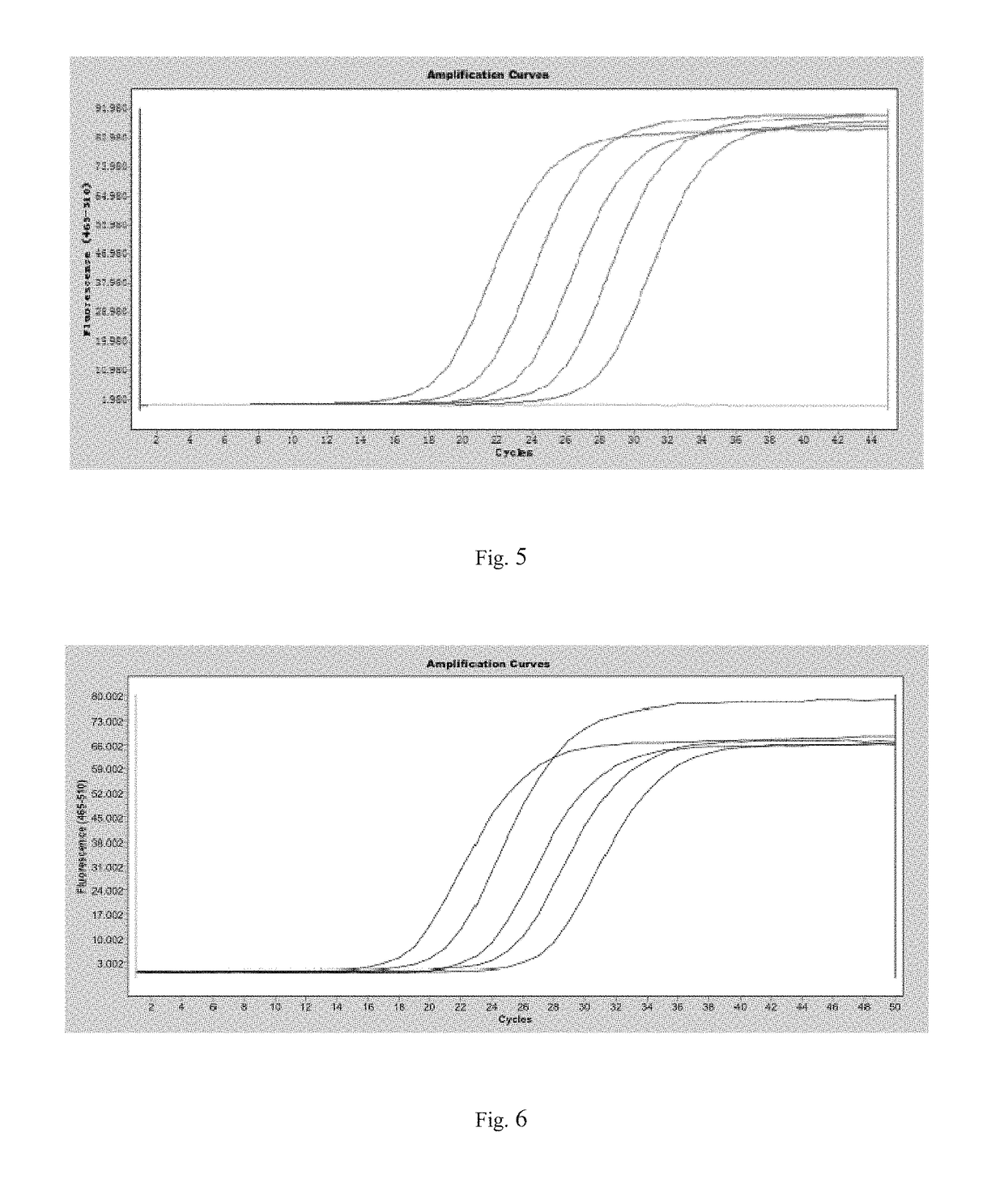Molecular detection/diagnosis reagent for tumor
- Summary
- Abstract
- Description
- Claims
- Application Information
AI Technical Summary
Benefits of technology
Problems solved by technology
Method used
Image
Examples
embodiment 1
Sample Treatment and DNA Extraction
[0041]An excrement sample and a buffer solution are mixed and ground according to a ratio of 1 g of excrement to 4 ml of buffer solution, and then the mixture is centrifugated so as to reserve supernate and abandon precipitates.
[0042]8 ml of the supernate is centrifugated at 4000 rpm for 5 min, and then 5 ml of the centrifugated supernate is transferred into a new centrifugal tube which is pre-filled with 3 ml of cell lysis buffer and has the volume of 15 ml.
[0043]100 ul of capturing magnetic beads are added into each centrifugal tubes which are incubated in a water bath kettle at 92 DEG C for 10 min and incubated in a table concentrator at 100 rpm at room temperature for 1 h, and then after short centrifugation, the centrifugal tubes are placed on a magnetic frame for 5 min so as to abandon the supernate.
[0044]There are two available capturing probes, which are both effective and can capture target fragments.
Capturing probe 1:SEQ ID NO. 1:AGCCCGCG...
embodiment 2
PCR (Polymerase Chain Reaction) Detection Process
[0050]A PCR system and procedures are respectively as shown in Table 1 and Table 2.
TABLE 1PCR systemComponentAdding amount (ul)Forward primer (FP) (100 uM)0.125Backward primer (RP) (100 uM)0.125Probe (100 uM)0.05dNTP (10 mM)1Magnesium ion55*buffer5Reaction enzyme0.5Nuclease-free water8.2DNA to be detected5Total25
TABLE 2PCR proceduresCycle numberTemperature (° C.)Time (s)195300 1095206230703040952058607230 (Collection of fluorescence)13730
[0051]Primers are designed, and their amplification efficiency is researched (as shown in Table 3). The amplification system and the procedures are as mentioned above.
TABLE 3Primers and amplification efficiencySequenceAmplificationnumberPrimer nameSequenceresultSEQ ID NO. 3SM-0FPGAGGAAGCGAGCGTTTTCFIG. 5SEQ ID NO. 4SM-0RPAAAATACCGCAACGATTACGASEQ ID NO. 5SM-1FPGTAGGAGGAGGAAGCGAGCGTTTTCFIG. 6SEQ ID NO. 6SM-1RPCGCAACGATTACGACTCAAACTCGASEQ ID NO. 7SM-2FPTAGGAGGAGGAAGTGAGTGTTTTTGFIG. 7SEQ ID NO. 8SM-2RPACCA...
embodiment 3 sample detection
[0058]Excrement samples of 46 patients definitely diagnosed as suffering from intestinal cancer based on enteroscopy and pathological examination, excrement samples of 46 patients definitely diagnosed as suffering from precancerous adenoma (polypus having a diameter more than or equal to 1 cm) based on enteroscopy and pathological examination, and excrement samples of 46 patients definitely diagnosed as normal based on enteroscopy were clinically collected.
[0059]The above-mentioned excrement samples were treated and subjected to DNA extraction according to the method in Embodiment 1. The 138 samples were subjected to PCR detection by using the PCR detection process in Embodiment 2.
[0060]The 46 intestinal cancer patients (Ca) (definitely diagnosed as suffering from the intestinal cancer based on the enteroscopy), the 46 normal patients (Norm) (definitely diagnosed as normal based on the enteroscopy), and the 46 precancerous adenoma patients (polypus having a diameter more than or equ...
PUM
| Property | Measurement | Unit |
|---|---|---|
| Volume | aaaaa | aaaaa |
| Volume | aaaaa | aaaaa |
| Volume | aaaaa | aaaaa |
Abstract
Description
Claims
Application Information
 Login to View More
Login to View More - R&D
- Intellectual Property
- Life Sciences
- Materials
- Tech Scout
- Unparalleled Data Quality
- Higher Quality Content
- 60% Fewer Hallucinations
Browse by: Latest US Patents, China's latest patents, Technical Efficacy Thesaurus, Application Domain, Technology Topic, Popular Technical Reports.
© 2025 PatSnap. All rights reserved.Legal|Privacy policy|Modern Slavery Act Transparency Statement|Sitemap|About US| Contact US: help@patsnap.com



